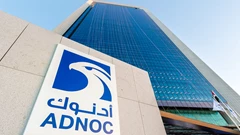Southeast Asia needs seamless integration of technologies for carbon neutrality
Southeast Asia must continue to prioritise the integration of renewable energy and the addition of new natural gas infrastructure to achieve an affordable, resilient and sustainable energy future, according to Black & Veatch, a global leader in critical infrastructure solutions.
Further, the industry and governments in the region must continue to collaborate on enabling long-term conditions that facilitate the deployment of future technology solutions across hydrogen and ammonia, carbon capture, energy storage and bidirectional, cross-border grids.
“A successful and equitable energy transition involves planning for and integrating multiple technologies to ensure that everyone has access to a stable and reasonably priced energy supply. Working in tandem with renewable energy, highly flexible and dispatchable generation, such as gas-fired power generation and small and mid-scale LNG project development, are essential to accomplishing these goals,” said Narsingh Chaudhary, Executive Vice President and Managing Director, Asia-Pacific, Black & Veatch.
His comments came ahead of the company’s participation at the Future Energy Asia Exhibition and Summit in Bangkok.
Gas-fired power generation has the quick ramp-up and ramp-down capabilities needed to adapt to changing grid energy demands. Advanced gas turbines in a simple cycle configuration can supply more than 400 MW to the grid in 10 minutes and are designed to reach full combined cycle load in 30 minutes to one hour, the company said.
New gas turbine technologies can operate at low loads of less than 25 percent of their baseload capacity in some cases and ramp at 10 to 15 percent of their full load capacity per minute. Most modern turbine technology can co-fire emissions-free hydrogen, and by 2030, most original equipment manufacturers predict that new turbines will be 100 percent hydrogen capable.
Additionally, Floating LNG (FLNG) liquefaction facilities and floating storage and regasification units (FSRUs), can function as alternative and proven delivery mechanisms in LNG value chain. Black & Veatch’s bankable and cost-efficient LNG solutions help accelerate production, monetise gas fields and bring pipeline gas to market, faster.
These features of gas-fired generation make it suitable for baseload generation and stabilizing the grid alongside an expected increase in battery energy storage system deployments, the company said.
A survey conducted by Black & Veatch before the ongoing energy crisis indicates that gas-fired power plants have a future as an investment class in Asia. Approximately half of the respondents believe that over the next five years there will be ‘more investment’ in gas or LNG-to-power facilities combined with carbon capture.
At this year’s Future Energy Asia Exhibition & Summit 2023, Chaudhary will discuss how expanding gas-fired generation can help to keep power grids with high variable renewable energy generation in balance.
KEEPING THE ENERGY INDUSTRY CONNECTED
Subscribe to our newsletter and get the best of Energy Connects directly to your inbox each week.
By subscribing, you agree to the processing of your personal data by dmg events as described in the Privacy Policy.
More technology news

SLB wins service contracts for all Petrobras offshore fields in Brazil

Energy efficiency is the decisive factor in electric motor choice, finds ABB research

SLB Capturi completes the world’s first industrial-scale CCS plant at a cement facility

ADNOC launches $80+ billion XRG for low-carbon energy and chemicals

ENEC and ADNOC to advance nuclear technology for energy efficiency

COP29 Presidency hosts inaugural Digitalisation Day

SLB launches Stream high-speed intelligent telemetry for drilling complex wells

Vici Energy joins the United Nations Global Compact

TAQA launches next generation inflow control technology
















